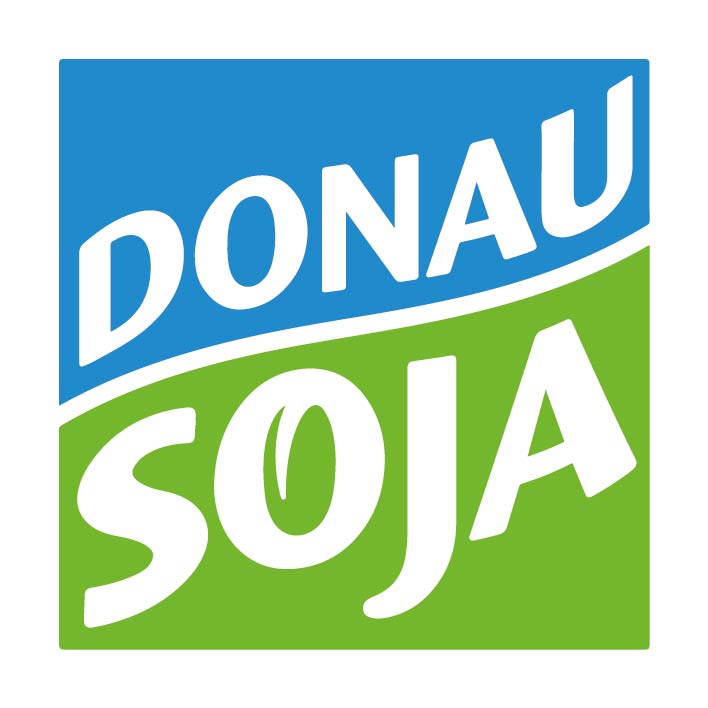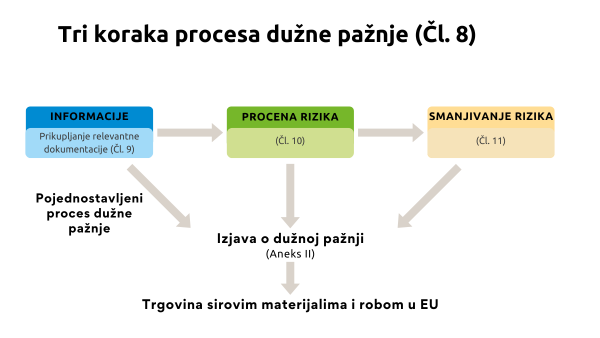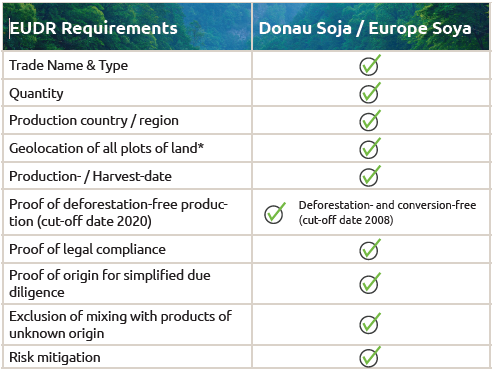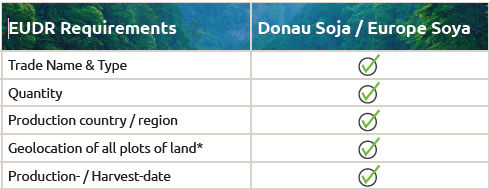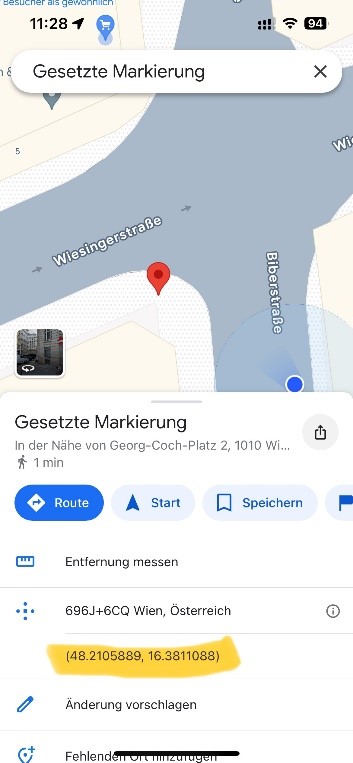EUDR: Donau Soja podržava članove i partnere u implementaciji
EU Uredba o deforestaciji (EUDR) podrazumeva sledeće:
DECEMBAR 2024. GODINE
3. decembra 2024. godine zaključeno je da se period implementacije EUDR-a treba produžiti za godinu dana, do 30.12.2025. (za mala preduzeća, datum primene je pomeren na 30.06.2026. godine).
Predlog Evropskog parlamenta da se uvede kategorija „nultog rizika“ nije usvojen. Sadržaj originalne verzije sa tri kategorije rizika – niski, standardni i visoki – ostaje nepromenjen. Kriterijum za države, koji će klasifikovati sve zemlje uzgoja u jednu od ove tri kategorije, treba da bude finalizovan do kraja juna 2025. godine.
NOVEMBAR 2024. GODINE
14.novembra 2024, Evropski parlament je glasao o produženju perioda implementacije EUDR-a koji je predložila Evropska komisija i potvrdio da EUDR mora biti primenjen od 30.12.2025. umesto 30.12.2024. (za mala preduzeća, datum primene promenjen na 30.06.2026.).
Pored toga, Parlament je predložio uvođenje nove kategorije „nulti rizik“: Za proizvode iz zemalja sa nultim rizikom ne bi bili potrebni geolokacijski podaci niti izjava o dužnoj pažnji. Međutim, ovaj predlog nije usvojen.
Naredni koraci
Predlog porazuma biće predmet rasprave na plenarnoj sednici u trećoj nedelji decembra.Pored toga, nova dugo očekivana verzija FAQs i Smernica za implementaciju EUDR-a objavljena je juče. Smernice kroz 11 poglavlja opisuju koje procese dužne pažnje kompanije moraju uvesti i kako standardi poput Donau Soja standarda mogu podržati implementaciju.
Sa ovim odlaganjem kompanije dobijaju jednu godinu da se prilagode zahtevima EUDR-a, međutim nije u planu da se menja sam sadržaj uredbe. Ovo je dobra vest za mnoge kompanije koje se još nisu pripremile, ali i gorka vest za kompanije koje su već uložile mnogo truda u usklađivanje. U svakom slučaju, kompanije se i dalje moraju pripremiti za EUDR, dok Donau Soja nastavlja da nudi rešenje za usklađenost za zahtevima EUDR-a.
Od 30. decembra 2024, proizvođači, prerađivači i trgovci sirovinama soje, palminog ulja, gume, kakaoa, kafe, govedine i proizvoda od drveta na tržištu EU moraju dokazati, kroz definisan proces dužne pažnje, da je njihova roba proizvedena bez deforestacije (datum preseka 2020) i u skladu sa nacionalnom legislativom zemlje proizvodnje, i da to potvrde izjavom o dužnoj pažnji (DDS). Mora postojati sledljivost za proizvode sve do polja, uključujući podatke o geolokaciji. Sledljivost kroz lanac snabdevanja smatra se neophodnim kako bi se dokazalo da soja ne vodi poreklo iz područja gde je nedavno bilo krčenja šuma.
Kao član EUDR Ekspertne grupe, Donau Soja ima mogućnost da razmotri otvorena pitanja direktno sa Evropskom komisijiom i da najpre o tome obavesti naše partnere, kako bi se što bolje pripremili.
Međutim, sledeće informacije nisu pravno obavezujuće i mogu biti podložne prilagođavanju tokom procesa, kako nove informacije od Evropske komisije postanu dostupne.
Osnov za donošenje uredbe
Evropska unija uvozi milione tona sirovina godišnje, zbog čije proizvodnje su iskrčene šume u drugim delovima sveta. Samo za stočnu hranu uvozi se oko 35 miliona tona soje godišnje, uglavnom iz Južne Amerike, gde se šume i drugi vredni ekosistemi, u nezamislivim razmerama pretvaraju u obradivo zemljište. Prema FAO, 90% deforestacije na globalnom nivou uzrokovano je širenjem poljoprivrednog zemljišta. Zbog složenosti globalnih lanaca snabdevanja rinfuznom robom često ne znamo njeno poreklo. Međutim, studije pokazuju da je EU drugi najveći uzrok krčenja šuma na globalnom nivou. Ovde na scenu stupa EUDR: Složeni lanci snabdevanja treba da se razdvoje, tako da možemo da isključimo nedavno posečena područja iz lanca snabdevanja EU i da kupujemo samo od proizvođača koji ne krče šume.
Datum preseka za deforestaciju
Kao datum preseka za deforestaciju definisan je 31. decembar 2020. godine. To znači da će područja na kojima je bilo krčenja šuma od 1. januara 2021. godine biti isključena iz lanca snabdevanja EU.
EUDR ide dalje od zakonodavstva u zemljama uzgoja: Čak i površine na kojima je bilo legalnog krčenja šuma u zemlji uzgoja nakon 31. decembra 2020. godine će biti isključene iz lanca snabdevanja.
Mala i srednja preduzeća
Mala preduzeća su u obavezi da primenjuju EUDR od 30. juna 2025. godine.
Trgovci malih i srednjih preduzeća mogu plasirati relevantne proizvode na tržište samo ako dokumentuju informacije o kupcima i prodavcima, uključujući referentni broj DDS, i čuvaju ih pet godina. Ukoliko DDS za relevantni proizvod već postoji, mala i srednja preduzeća ne moraju da završe ceo proces dužne pažnje, već samo da proslede referentni broj postojeće DDS.
Mala preduzeća su preduzeća koja ispunjavaju jedan od sledeća tri kriterijuma (prema EU Direktivi 2013/34/EU – Član 3):
- Ukupni bilans stanja: EUR 4,000,000 / Neto promet: EUR 8,000,000 / Prosečan broj zaposlenih: 50
Srednja preduzeća su preduzeća koja ispunjavaju jedan od tri sledeća kriterijuma:
- Ukupni bilans stanja: EUR 20 000 000 / Neto promet: EUR 40 000 000 / Prosečan broj zaposlenih: 250
Provere i kazne
Nadležni organ svake zemlje članice EU je odgovoran za proveru uvoza i izvoza u i iz zemlje. Za uvoz iz zemalja niskog rizika, 1% relevantne robe i operatera će se kontrolisati svake godine, za zemlje sa standardnim rizikom 3%, a za zemlje visokog rizika 9% operatera i robe.
Kazne mogu iznositi do 4% prometa kompanije u EU. Pored toga, kompanije mogu biti privremeno isključene iz javnih nabavki ili im može biti zabranjeno da plasiraju relevantne proizvode na tržište.
Vremenski okvir
- Sledeći termin za često postavljana pitanja: jun
- Dokument sa smernicama: July
- Benchmark za zemlje: datum objavljivanja još nije poznat
EUDR Informacioni Sistem
Jun 2024:
- API Testiranje usaglašenosti (Application Programming Interfaces) za kompanije
- Dokumenti za obuku će biti objavljeni
Septembar 2024:
- Period obuke
Sredina novembra 2024
- Kompanije se mogu registrovati u Informacioni Sistem
Kako se pripremiti?
U pripremi za EUDR, morate uzeti u obzir sledeće aspekte:
1) Da li je vaša kompanija male ili srednje veličine, ili nije u kategoriji MSP (mikro, mala i srednja preduzeća)?
2) Analizirajte svoj lanac snabdevanja
Da li kupujete relevantne proizvode? (pogledajte Aneks 1 ili „Soja obuhvaćena EUDR-om“ ispod)
Ukoliko je vaš odgovor potvrdan:
– Koje informacije već imate o ovim proizvodima?
– Koje informacije nedostaju? (pogledajte Član 9 EUDR ili „Prikupljanje informacija“ ispod)
– Odakle nabavljam ove proizvode? (dobavljači, zemlje..)
– Koji su rizici?
– Šta mogu da preduzmem kako bih umanjio rizike?
3) Postavite vremenski okvir za promene koje su potrebne u vašoj kompaniji.
To može uključiti sledeće:
– Akcioni plan za usklađenost sa EUDR-om
– Uključivanje dobavljača – Šta moji dobavljači znaju/rade?
– Priprema IT sistema i API testiranja
– Analiza sertifikacija koje su dostupne i koje odgovaraju vašoj svrsi
Uloga EU proizvođača i kompanija
Prema pravilima Svetske trgovinske organizacije (WTO) ne mogu se donositi posebna pravila za sopstveno tržište. Stoga, zahtevi EUDR-a moraju biti primenjeni i na relevantne proizvode uzgajane u EU. Član 13 – pojednostavljena dužna pažnja – omogućava pojednostavljen proces dužne pažnje za proizvode iz zemalja sa niskim rizikom, što bi trebalo da važi za većinu zemalja EU i Evrope (službena klasifikacija rizika zemalja od strane Evropske komisije očekuje se do kraja 2024* godine). Prema tome, poljoprivrednici i kompanije u EU koji koriste evropsku soju, zbog kraćih lanaca snabdevanja , mogu očekivati manje dodatnog napora u poređenju sa uvozom iz područja visokog rizika.
Prvi proces dužne pažnje i priprema prve DDS izjave uvek su obaveza prvog učesnika na tržištu koji se nalazi u EU, a koji plasira robu na tržište. Nakon toga, svaka kompanija koja kupuje i prodaje relevantne proizvode u EU mora popuniti DSS na osnovu prethodnih DDS izjava. Kompanije izvan EU ne mogu izdati DDS.
Proizvođači soje u EU su dužni da obezbede proizvodnju soje bez krčenja šuma i odgovoeni su za popunjavanje DDS izjave. Međutim, biće moguće ovlastiti naredni nivo lanca snabdevanja da popuni DDS (npr. skladište ili kooperativa).
*Ovaj proces može biti odložen. U tom slučaju, sve zemlje će početno biti klasifikovane kao zemlje sa standardnim rizikom.
Soja i proizvodi od soje obuhvaćeni EUDR-om
U Aneksu I EUDR-a navode se proizvodi na koje se odnose obaveze dužnje pažnje.
proces dužne pažnje mora biti završen i DDS izjava popunjena i učitana pre nego što se oni plasiraju ili izvezu na tržište EUpreradi sojinog zrna u sojino ulje, nova DDS izjava mora biti popunjena sa podacima o soji koja je korišćena tokom prerade.
Obaveza dužne pažnje za soju u stočnoj hrani, na primer, završava se kada dođe do potrošnje soje (osim za goveda, jer je sama govedina navedena u Aneksu I EUDR-a).
Soja obuhvaćena EUDR uredbom
Aneks I Uredbe o deforestaciji definiše koji proizvodi su obuhvaćeni uredbom, a koji se mogu uporediti pomoću carinskih tarifa:
- 1201 Soja u zrnu, lomljena ili ne
- 1208 10 Sojino brašno i sojina sačma
- 1507 Sojino ulje i njegove frakcije, rafinisani ili nerafinisani, ali hemijski nemodifikovani
- 2304 Uljane pogače i ostali čvrsti ostaci dobijeni prilikom ekstrakcije ulja od soje, nemleveni, mleveni ili peletizovani
Proces dužne pažnje
Prvi distributeri na tržištu EU i velike kompanije u EU moraju da prate proces dužne pažnje u tri faze kako bi osigurali da su njihovi lanci snabdevanja u skladu sa regulativom i potvrdili to putem dostavljanja DDS-a.
Većina zemalja članica EU, kao i većina evropskih zemalja će verovatno biti klasifikovane kao niskorizične zemlje. To dovodi do pojednostavljenog procesa dužne pažnje, koji se sastoji samo od prikupljanja informacija i ne zahteva nikakvu procenu ili ublažavanje rizika. To podrazumeva manje birokratije za domaću soju.
Prikupljanje informacija
Sledeće informacije se moraju prikupiti i čuvati narednih pet godina, u skladu sa EUDR (Član 9 Zahtevi za informacije):
Trgovački naziv i tip
Količina
Zemlja / oblast uzgoja
Geolokacija svih parcela na kojima je soja uzgajana
Proizvodnja- / datum žetve
Dokaz o usklađenosti sa legislativama zemlje porekla
Dokaz o uzgoju bez defoerstacije
Naziv, adresa i e-mail adresa kompanije od koje su preuzeti i kojoj su isporučeni relevantni proizvodi (prodavac i kupac)
Izjava o dužnoj pažnji (DDS)
Pre stavljanja relevantne robe na tržište EU ili njenog izvoza, DDS se mora učitati u novi EUDR informacioni sistem. Tek tada se može trgovati robom.
Informacije koje moraju biti uključene u DDS (Aneks II):
Ime i adresa učesnika na tržištu (uključujući EORI broj ukoliko je moguće)
Ukoliko je moguće: referentni broj postojećih DDS (e.g. pri preradi sojinog zrna u ulje)
Trgovački naziv i tip
Količina
Zemlja/ oblast uzgoja
Geolokacijski podaci svih parcela na kojima su uzgajani relevantni proizvodi
Proizvodnja- / datum žetve
Potvrda da je postupanje sa dužnom pažnjom primenjeno i da je proizvod niskog rizika
Kada je potrebna izjava dužne pažnje (DSS)?
Kad god su proizvodi od soje dostupni trgovci moraju proslediti relevantne informacije kao deo DDS izjave.
Prilikom obrade relevantnih proizvoda, npr. sojinog zrna u sojino ulje, mora se napraviti nova DDS izjava, sa informacijama iz svih prethodnih DDS izjava.
Evropska komisija tek treba da definiše pravila za ove procese.
Uloga Donau Soja organizacije
Sertifikacija proizvoda ne garantuje automatski usklađenost sa EUDR uredbom. U Članu 11 – Smanjenje rizika – spominju se revizije i sertifikacija na licu mesta kao opcija za minimiziranje rizika, ali ne oslobađaju od procesa dužne pažnje ili odgovornosti.
Donau Soja / Europe Soya sertifikacija osigurava da je soja prozivedena bez deforestacije i konverzije zemljišta, sa 2008. godinom kao godinom preseka, u skladu sa nacionalnom legislativom zemlje porekla. Prema tome, zahtevi Donau Soja / Europe Soya standarda su rigorozniji od EUDR zahteva.
Planirano je da proizvođači obezbede sve relevantne informacije za DDS iz Donau Soja deklaracije i da te informacije budu prosleđene u našu bazu podataka i duž lanca snabdevanja, ukoliko to proizvođači žele. Donau Soja tako može pružiti potrebne informacije i olakšati proces kompanijama koje koriste Donau Soja / Europe Soia sertifikovanu soju. Informacije u okviru DDS izjave moraju da urade same kompanije. Odgovornost je na kompanijama koje kupuju/prodaju relevantne proizvode.
Prikupljanje informacija
*ukoliko je potrebno
Tabela 1: EUDR zahtevi u vezi sa prikupljanjem informacija (Član 9) koje ispunjavaju
Geolokacijski podaci
Geo-koordinate svih površina na kojima se uzgaja soja moraju se prikupiti kao deo Prikupljanja informacija i DDS izjave, bez obzira na to da li proizvod vodi poreklo iz zemalja niskog, standardnog ili visokog rizika.
Dodatni zahtevi za proizvođače će se uglavnom sastojati od prikupljanja i deljenja geolokacijskih podataka svih polja na kojima se uzgaja soja.
Jednostavan način da saznate geo-koordinate je da koristite digitalne mape na mreži, kao što su Google Maps ili slične programe, i kliknete na odgovarajuću lokaciju. Jednostavnim klikom na odgovarajuću lokaciju postavlja se marker (pogledajte crveni marker na grafiku 2 desno) i prikazuju se informacije o lokaciji uključujući geo-podatke (pogledajte označene brojeve žutom bojom na grafiku 2 sa desne strane).
Verovatno će biti moguć i ulazak na sve površine poljoprivrednika, bez obzira da li je soja tamo uzgajana u toj godini (tzv. „Deklaracija u višku“). Ovo pojednostavljuje proces u narednim godinama ako se soja uzgaja na drugom delu zemlje prozivođača.
Zahtevi za geopodatke
- Površina polja ispod četiri hektara: dovoljna je jedna geo-tačka (ovo pojednostavljuje usaglašenost sa EUDR za male parcele)
- Više od četiri hektara: Potrebne su informacije o parceli (jedna geo-tačka za svaki ugao parcele)
- Ako se soja gaji na više polja: sve zemljišne parcele moraju biti označene, u zavisnosti od njihove veličine, sa jednom tačkom geopodataka (<4 hektara) ili poligonom (>4 hektara)
- Preciznost: šest decimalnih mesta mora biti obezbeđeno za svaku geo-tačku
Šta nedostaje?
1. Uputstvo
Postoji potreba za jasnoćom instrukcijama u vezi sa primenom EUDR-a i jednostavnom, pragmatičnom primenom, posebno za proizvođače u zemljama niskog rizika. Evropska komisija nije izdala smernice za implementaciju EUDR-a kada je usvojen. Mnoga nerešena pitanja razrađuje ekspertska grupa Komisije sa članovima iz pojedinačnih država članica EU, kao i odabranih organizacija. Donau Soja je član Ekspertske grupe od decembra 2023. Na osnovu rada Ekspertske grupe, često postavljana pitanja se objavljuju u određenim intervalima.
2. Obim uredbe
Jedan od najvećih nedostataka je to što konverzija zemljišta drugih osetljivih ekosostema nije obuhvaćena uredbom. EUDR već predviđa da treba da postoje revizje i predlozi za proširenje. Prve revizije 2025 i 2026. godine obuhvataju teme koje se odnose na uključivanje „drugih šumovitih zemljišta i ekosistema“, drugih sirovina kao što je kukuruz, kao i uključivanje finansijskih institucija. Nakon pet godina biće razmotren uticaj na trgovonu, posebno na male proizvođače, kao i moguće mere za olakšavanje trgovine. Temeljna procena uticaja i mogućih efekata bi bila potrebna pre nego što uredba stupi na snagu. Da li će uredba biti izmenjena ili ne zavisi od ishoda odgovarajuće revizije i Evropske komisije koja će tada biti odgovorna.
3. Održiva proizvodnja soje
Održiva proizvodnja soje mora uzeti u obzir pitanja kao što su smanjenje emisije CO2, smanjenu upotrebu pesticida i đubriva, upravljanje vodom, upravljanje zemljištem, zaštita biodiverziteta, raznovrsni plodoredi bez GM (bez monokultura) i poštovanje ljudskih i radnih prava. Usklađenost sa Uredbom EU o krčenju šuma sama po sebi ne obezbeđuje održive lance snabdevanja. Strogi standardi uzgoja koji uzimaju u obzir ova pitanja stoga ostaju važno sredstvo za povećanje održivosti lanaca snabdevanja u EU.
Zašto bi trebalo zaštiti i druge ekosisteme osim šuma?
U Brazilu, na primer, većina konverzije zemljišta u novo poljoprivredno zemljište odvija se u Seradu, savani sa najvećim biodiverzitetom na svetu. Serado je izuzetno važan i za ciklus vode u Južnoj Americi i usko je u interakciji sa susednom amazonskom prašumom. Međutim, najveći delovi Serada nisu zaštićeni uredbom. Stope krčenja šuma u Amazonu su značajno pale pod novom brazilskom vladom od početka 2023. godine – ali rekordne površine se i dalje pretvaraju u poljoprivredno zemljište u Seradu.
Za više informacija kontaktirajte nas na sustainability@donausoja.org.
